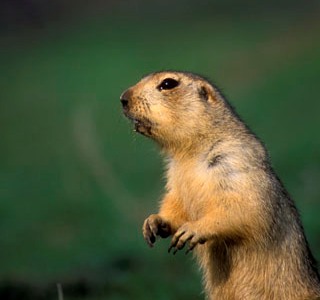
Yellow ground squirrel (Citellus fulvus)
Phylum — chordata
Class — mammalia
Order — rodentia
Family — sciuridae
Genus – citellus
Appearance
Body length is up to 38 cm, tail length is up to 12 cm (23-40% of body length). The weight of adult animals after hibernation: males are 700-900 g, females are 600-800 g, before hibernation, animals of both sexes weigh up to 1.6 kg.
The fur color is sandy-yellow, slightly speckled with black tips of the guard hairs. The tail is with a black pre-terminal border.
Habitat
Its native to Afghanistan, China, Iran, Kazakhstan, Turkmenistan, Uzbekistan and Russia.
Behavior
Yellow ground squirrel are usually located in groups. Settlements (colonies) are often separated from each other by distances of tens or hundreds of kilometers.
During the period of active life, molting takes place. By the beginning of hibernation, the animals are dressed in thick and soft fur. Having quickly accumulated fat reserves, adult males and females in the southern deserts in June — early July, and in the Northern part of the range — from the end of July lie dormant until the spring of the following year. In the spring, they wake up and come to the surface: in the South - from the end of February, and North — in March.
Diet
Diet includes bulbs, seeds, stems and leaves.
Reproduction
Life expectancy is more than 3 years, and Yellow ground squirrels reach sexual maturity only at 2-3 years of life.
After awakening from hibernation, the rut begins, which usually lasts 10-15 days. At this time, you can clearly hear the ringing, staccato voices of males and more prolonged and hoarse calls of females. One litter per year; pregnancy-30 days. Broods appear from April to May. The number of young in the brood is from 4 to 14 and even 17 (usually 6-8); in the North of the range, the broods are larger. Lactation lasts 30-40 days; in May-June, the young leave the mother and settle.
In captivity
Easily become tame and well tolerate captivity. For a couple – a male and a female, an aviary of at least 1,5x1,5 m is being built on a high concrete foundation. Inside the aviaries, shelters are placed (houses, boxes, pieces of pipes, etc.), blocks for sharpening incisors, drinking bowls with fresh water. The bedding is changed regularly. By September, animals are given a lot of material for bedding-straw, leaves. After falling into hibernation, the cells are covered with a thick layer of the same materials. During hibernation, animals are kept one at a time.
Food at home does not have any difficulties: a mixture of grains of cultivated and wild cereals, rhizomes of field plants, vegetables and fruits, green branches of soft trees. They willingly eat oats, sunflowers, grains of cultivated cereals mature and in the stage of milky-waxy ripeness, granulated feed, bread, beets, carrots, mealworms, herbs.
 Russian
Russian
 English
English


















